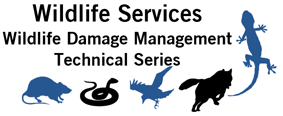United States Department of Agriculture: Animal and Plant Health Inspection Service

Wildlife Damage Management Technical Series
Date of this Version
3-2017
Document Type
Article
Citation
Taylor, J.D., Yarrow, G.K., and J.E. Miller. 2017. Beavers. Wildlife Damage Management Technical Series. USDA, APHIS, WS National Wildlife Research Center. Ft. Collins, Colorado. 21p.
Abstract
The American beaver (Castor canadensis) (Figure 1) is known as an “ecosystem engineer” because of the benefits their dams provide to biological diversity and ecosystem function. It also is considered a “keystone species” because of its ability to transform its environment, creating new habitats upon which other species depend. Despite the many positive benefits beavers provide through foraging and dam building, beavers also create conflict with people when their activities cause damage. The authors of this publication acknowledge and appreciate the many positive benefits that beavers provide; however, the focus of this publication is to provide basic information on beaver ecology, damage, and management. In general, beavers cause damage by 1) gnawing on trees or crops; 2) flooding trees, crops, property, or transportation corridors (roads, airports, railways) through dam building; and 3) degrading and destabilizing banks and levees through burrowing.
There are several lethal and nonlethal damage management tools and techniques for resolving beaver conflicts. Lethal methods include shooting and trapping. Although lethal methods may be appropriate in many situations, modern wildlife damage management also includes several non-lethal options. Non-lethal techniques for reducing beaver damage include exclusion, habitat modification, repellents, and relocation. To be the most effective at reducing damage, it is recommended that several management methods be used in combination.
Included in
Behavior and Ethology Commons, Biodiversity Commons, Other Animal Sciences Commons, Other Ecology and Evolutionary Biology Commons, Population Biology Commons, Terrestrial and Aquatic Ecology Commons


Comments
U.S. government work.